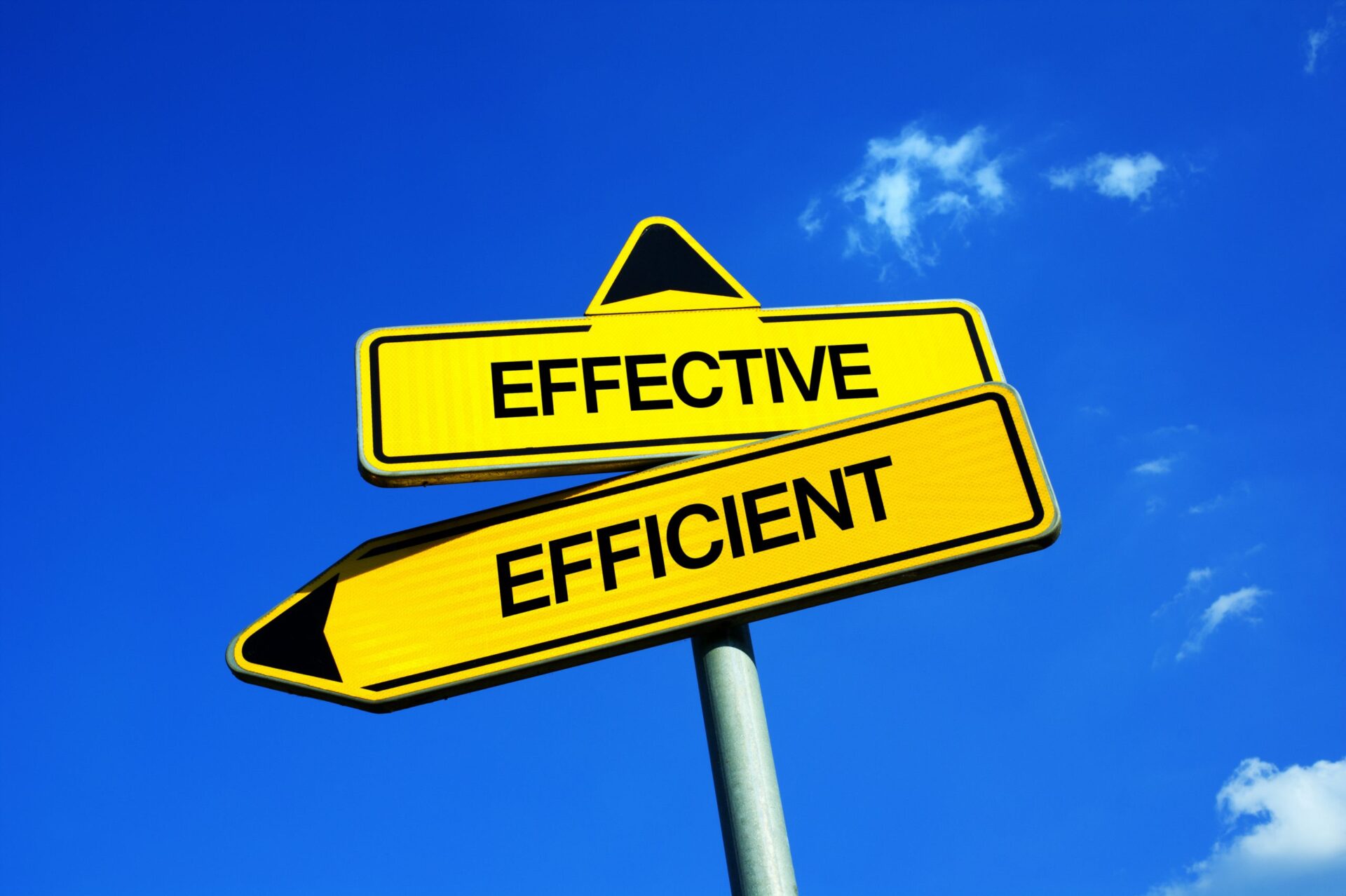There are two different concepts here: the most effective leadership style in your workplace, and the most effective leadership style for you.
Who you are will have a bearing on the kind of leader you become, and how effective you are in that role. Experience, context, training, coaching, facilitation and reflection will help you to develop and access more of the different styles which are possible, developing and honing your style and skills to become more and more effective.
You can change your leadership style
Whether you’re new to leadership, are mid-career and middle management, or a boardroom regular, there are courses which will help you build your skills and support you to be the best you can be. Here at Roffey Park Institute, we’ve got decades of experience in supporting leaders and helping them to both build upon and understand their potential. As part of that, we look at some of today’s most effective leadership styles, and how they relate to you – and help you think about how you can change your leadership style.
1. Compassionate Leadership

This stereotype-busting leadership style does exactly what it says on the tin: it’s about being a compassionate person, caring for colleagues and leading the organisation to do the same. And it’s on the up, fitting with the current feeling that people’s views should be taken into account and also the pressure put on businesses by customers concerned about the treatment of suppliers and employees,… and willing to campaign about it on social media. That makes it pretty effective leadership.
Meysam Poorkavoos, in his free compassionate leadership paper for Roffey Park, says:
“One might think that sufferers are the only ones who benefit from compassionate leadership. This is not true. The positive effect of compassionate leadership on people reaches way beyond the sufferers. Compassionate leadership has a clear influence on clients, employees who witness the compassion act and those who are involved in the actual act of compassion.”
He cites research findings that this can improve employee engagement and retention, boosts productivity, and results in positive customer service.
2. Strategic Leadership

The strategic leadership style includes having a plan, creating a shared sense of identity and moving the organisation closer to its objectives. Strategic leaders need a clear sense of purpose to inspire and engage their teams who need to be confident to follow them into uncharted territory. To be effective, strategic leaders also need to utilise strategic thinking, and be fully aware that taking riskier, high-profile decisions requires a greater awareness of your leadership to be properly effective.
3. Distributed Leadership
In his podcast Distributed Leadership: Ideas and Practice Tom Kenward, Head of Qualifications at Roffey Park Institute, asks: to what degree do your employees take responsibility for delivering the quality of work required? He talks about four simple ways leaders can encourage their team members to take more responsibility for the common business purpose – achieving a true partnership and distributed leadership model.
4. Authentic Leadership

How true to yourself are you in the workplace? Do you have an authentic leadership style? Many of us find ourselves switching role and identity on the commute from home to desk – but not authentic leaders, who are genuine, self-aware and lead an inclusive culture which supports employee engagement and interaction. All this leads to a leadership style of authenticity and a culture of trust – gained through being positive and unafraid of emotions – which in turn makes for effective leadership.
5. Situational Leadership

It’s a rare leader who isn’t coping with constant change in the workplace – and it’s a situational leader who does so by adjusting their leadership style to the development level of the followers they are trying to influence. So in a crisis you may draw on Churchill’s more authoritarian style, but if innovation is on top of the agenda a more hands-off, devolved style is likely to work better. It’s a brilliant approach for effective leadership– but you need good leadership knowledge to be able to move from style to style as required.
6. Transactional Leadership
This is the leadership style which might be familiar to most of us, with the traditional values of supervision, organisation and performance management, with a clear chain of command. Transactional Leadership is an autocratic style, effective in crisis and emergency situations, and maintaining the
status quo – so is going to be more suitable for established organisations rather than start-ups or innovators. Channel your inner sergeant-major for this one.
7. Embodied Leadership
Pressure goes hand in hand with leadership – but how we react to that makes all the difference. This leadership style helps you move away from tension, learning new patterns to help you lead with presence and becoming more aware of attention, action and accountability. It’s effective leadership for both the staff and the leader.
8. Global Leadership

Communication is king for the effective global leader: you’ll need to lead effectively across different cultures and continents, understanding business and politics worldwide as well as trends and perspectives. It’s crucial to properly understand the differences between teams and contexts in different regions to make this an effective style of leadership.
9. Collaborative Leadership

Leadership and organisations are messy, dealing with complex situations and relationships. The idea of collaborative leadership is that organisations are more successful when they value people’s willingness to work in partnership with colleagues – and that means everyone’s voice has to be heard. It can be a tricky leadership style to make effective, as the risk is getting tangled in different peoples’ experiences and voices – but Roffey Park regular speaker Gervaise Bushe has developed the Clear Leadership Model to keep collaboration working smoothly.
10. Transformational Leadership
This leadership style sees the leader working to change their employees’ or followers’ behaviour, creating a vision of what they want to be. This style is much more about personality than the others, and generally requires someone who is keen to promote themselves, has a high energy level and is willing to take risks and use unusual strategies to engage those they lead. Don’t try this unless you’re feeling particularly charismatic.
Is it effective leadership? It can depend.
Are you the leader you want to be?
Every leader has the capacity to grow, improve, and develop their own effective leadership style, particularly with expert help. Here at Roffey Park, we have decades of experience in developing leadership and management, with programmes meeting the needs of the newest and most experienced professionals alike.
No matter where you’re based, our expertise is easy to reach as we’re close to London Gatwick, the M25 and fast train services. Why not find out more about what we do and how we do it and contact our team to discuss your needs?





